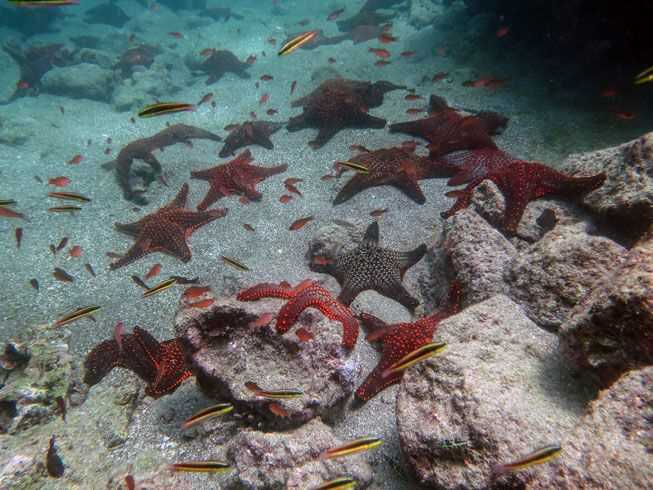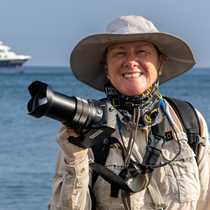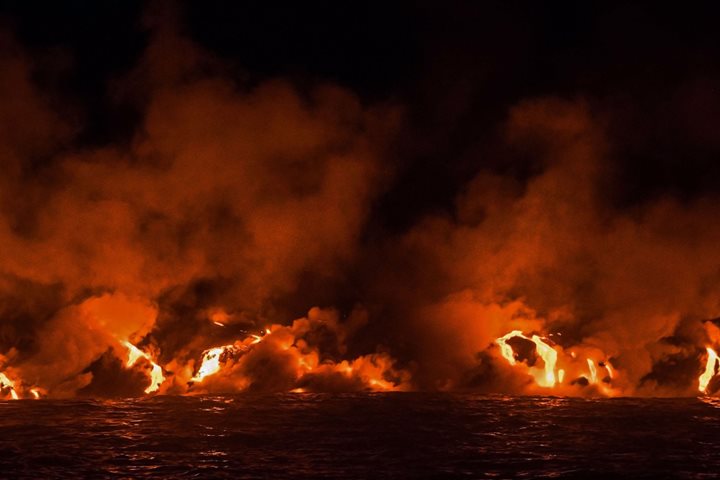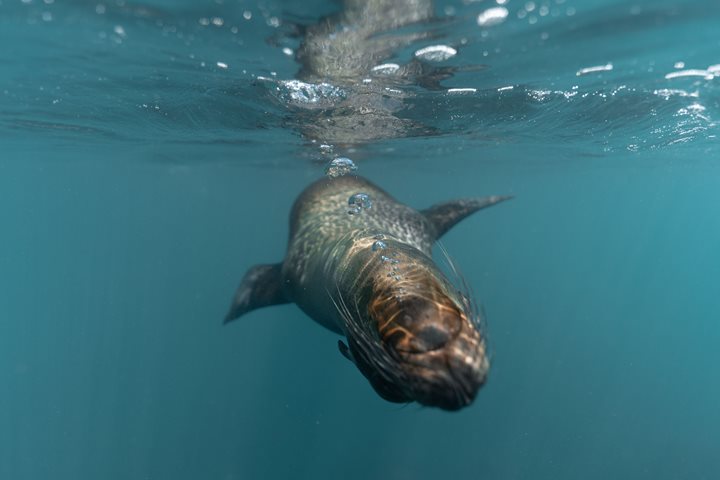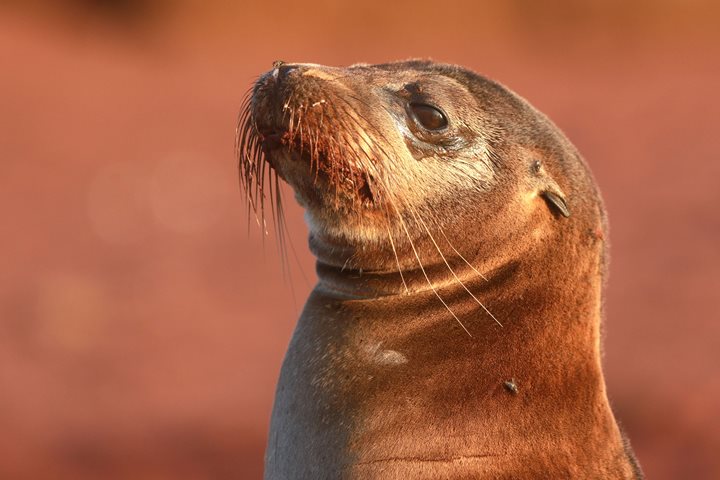We split our first full day in Galapagos between two islands. Bartholomew Island, with the iconic Pinnacle Rock and stark arid terrain in contrast with the rich Pacific seascape. Then Rabida in the afternoon, with its stark red sand and imposing cliffscape, rocked paths, sea lions, and an array of underwater marvels.
- Daily Expedition Reports
- 15 Apr 2019
Bartholomew and Rabida Islands, 4/15/2019, National Geographic Islander
- Aboard the National Geographic Islander
- Galápagos
Cindy Manning, Expedition Leader
Cindy was raised in a family that was fortunate enough to live in many different countries across the globe. During her formative years, she counted Latin America and Europe as home, with periods in-between living in Illinois and Indiana, where she a...
Read MoreShare Report
Related Reports
11/23/2022
Read
National Geographic Islander II
Isabela and Fernandina
Our day began with the chance to point out a lot of interesting geological features as we enjoyed Zodiac tours along a massive flank of Ecuador Volcano on Punta Vicente Roca. In the afternoon, we took a sunny walk on Punta Espinoza on Fernandina Island. We spotted many iguanas, and a bunch of sea lions hanging around, too.
11/22/2022
Read
National Geographic Islander II
North Seymour & Rabida Islands
Relatively small and low compared to neighboring Santa Cruz, North Seymour is located to the north of Baltra. The island is dry with predominantly low shrubs, like prickly pear cacti. The incense trees are bare during the dry season. Seabirds like frigatebirds and blue-footed boobies nest on the island, and sea lions rest on the sand when they are not fishing. Land and marine iguanas also live here. Rabida is in the middle of the archipelago and has a striking red sand beach. We observed a small colony of sea lions of all ages resting or nursing. Behind the beach, American flamingos nest in a brackish lagoon. This island is full of contrasts and wildlife that we enjoyed observing during this day of expedition.

